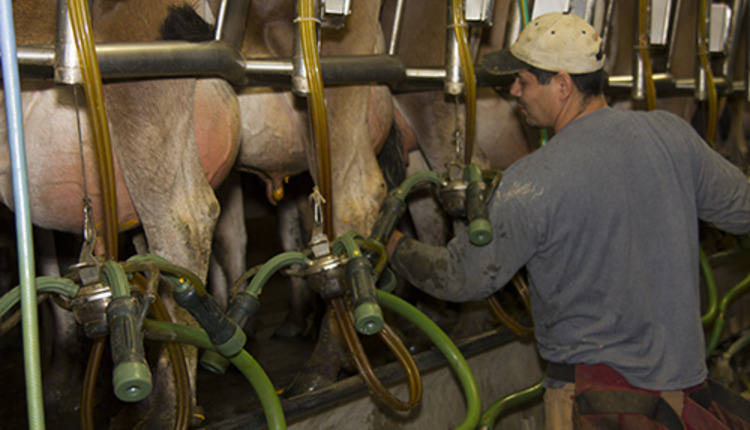
Of the 154,418 individuals employed on U.S. dairies, slightly more than half are of immigrant origin, noted David Anderson with Texas A&M.
"In the last five years, dairy has become more reliant on an immigrant workforce," he added, while speaking at the Federal Reserve Bank of Chicago's conference on labor issues facing agriculture and the rural Midwest.
Nearly 80 percent of the milk produced in the U.S. is done so on dairies that employ immigrant labor. In 2009, that number hovered closer to 60 percent.
To tease out the impact that a loss of immigrant labor would have on the U.S. dairy industry, a nationwide survey was conducted by the National Milk Producers Federation in conjunction with Texas AgriLife Research at Texas A&M.
"If the U.S. dairy industry lost half of its immigrant workforce, milk prices would rise by 45.2 percent. There would be a 24.2 billion pound reduction in milk production, and fluid milk sales would be cut by $5.8 billion," noted Anderson.
"If there was a 100 percent loss of this labor pool, a 90.4 percent greater milk price would result," he continued.
Dairy needs a trained, stable labor force. "With higher turnover rates, production, herd health and feed efficiency suffer. Dairies experience greater calf and cow losses, too," he added.
But the once reliable labor pipeline from Mexico is drying up.
During her presentation, Adjusting to an era of farm labor scarcity, Diane Charlton noted that rural Mexico has long provided an elastic supply of hired farm labor to the U.S. But the labor supply from rural Mexico is reaching the end of its abundance.
The farm labor supply from rural Mexico is declining by 0.97 percent, or 150,000 people, each year, forcing U.S. and Mexican farmers to compete for a dwindling supply of farm workers.
"Historically, agriculture has moved deeper and deeper into Mexico to source farm workers. Every region of that country, though, has shown a trend to find employment outside of agriculture," added the Ph.D. candidate from the University of California-Davis.
"Economic conditions, immigration policy, border violence, industrial employment and weakening networks have all contributed to the decline of this labor pool," she noted.
(c) Hoard's Dairyman Intel 2015
November 23, 2015








